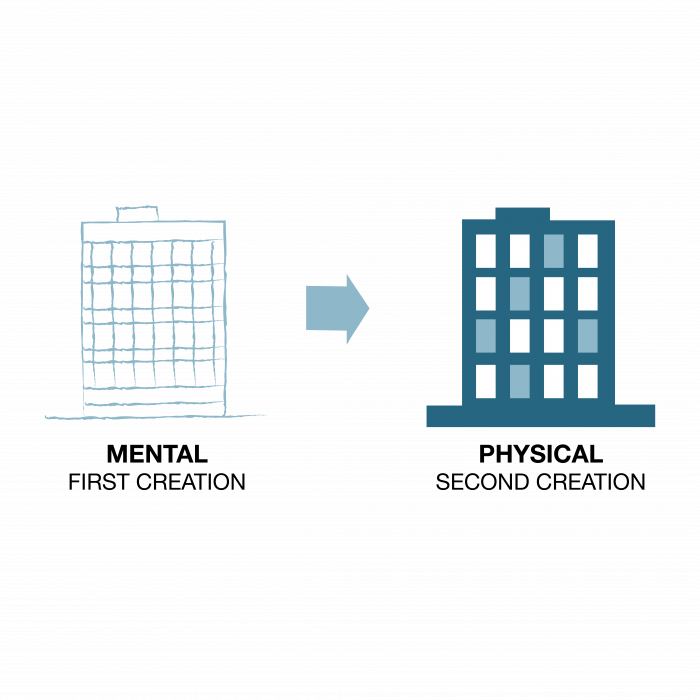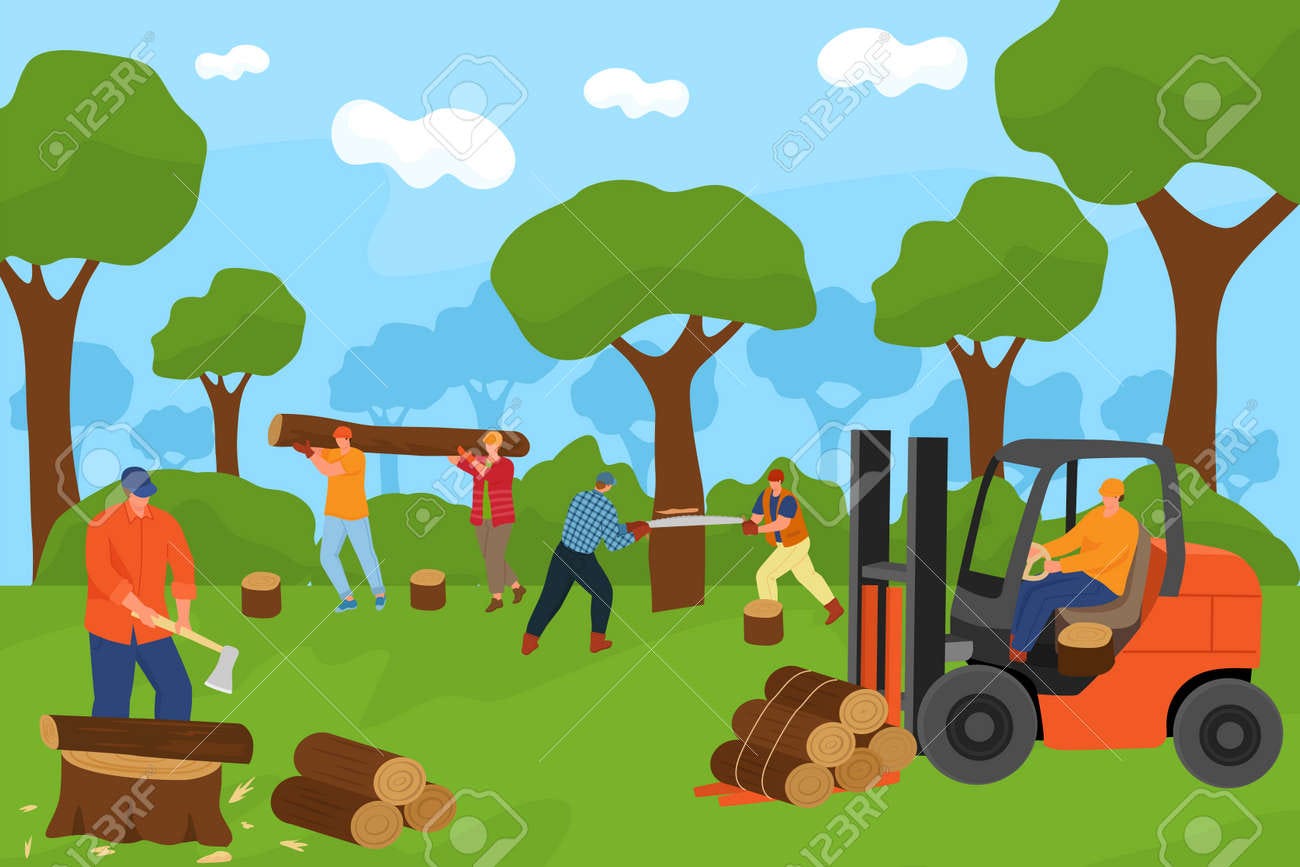Begin with the end in mind
What does that even mean?? Blueprints and Jungles
Imagine you are trying to build a house. You start putting together bricks and cement until you create a solid-looking wall. Then you do the same a few more times. During the process, you had no prior design of the house, no guidance or directions. You were practically blindly building. When you finish, there's a high chance that it didn’t turn out the most appealing way. Maybe you made it too narrow and small or maybe you didn't have enough windows (oops). You did all those days of hard work, and used extensive effort and money, just to end up with a terrible house. Now, you can’t even change it without spending more money and priceless time.
To you, that might sound stupid and extreme. You are probably thinking “why would you build a house without a blueprint?” Well, that’s the equivalent of living our life without having “the end in mind”, not having a “mission statement”, a set of valued principles we live by.
(Sneaky) Welcome : )
Hello everyone, Welcome back to my Newsletter. In this post, I will be discussing the habit of “beginning with the end in mind” (2nd habit out of 7) based on the book The 7 Habits of Highly Effective People by Stephen R. Covey. I will explain what this habit means exactly followed by practical tools we can apply in our life to be more effective. One final thing: if you are reading this right now, I would really appreciate it if you could share my newsletter with just ONE friend. I am trying to push out the quality value to as many people as possible. Now, back to the “begin with the end in mind” thing…
(P.S: this letter turned out to be quite long, feel free to skip to sections that seem most valuable to you, don't miss “My Ace” and “Application”)
What does “Beginning with the end in mind” mean?
Before you explode with confusion, let me briefly explain what the author means by “beginning with the end in mind”. Generally, it means having a set of valued principles that you live by. These principles and values guide your life and give it direction and purpose. It’s the same as having a blueprint before building a house. Or having a plan before you go to the gym. It makes you more effective.
Wait, this will help… I’m going to directly quote from the book a mental exercise that you can do right now to have a better understanding of this habit and the rest of this newsletter. Please do this! (don’t be intimidated by the length of the exercise) I did it myself and it was genuinely worth it. If you absolutely don’t have the time right now (be honest), then you can skip to the next section to get value from the rest of the newsletter. However, I do suggest you save it and come back later to do this mental exercise when you have time.
MENTAL EXERCISE (TRY IT NOW!!! It’s crucial)
“Please find a place to read these next few pages where you can be alone and uninterrupted. Clear your mind of everything except what you will read and what I will invite you to do. Don’t worry about your schedule, your business, your family, or your friends. Just focus with me and really open your mind. In your mind’s eye, see yourself going to the funeral of a loved one. Picture yourself driving to the funeral parlor or chapel, parking the car, and getting out. As you walk inside the building, you notice the flowers, the soft organ music. You see the faces of friends and family you pass along the way. You feel the shared sorrow of losing, the joy of having known, that radiates from the hearts of the people there. As you walk down to the front of the room and look inside the casket, you suddenly come face to face with yourself. This is your funeral, three years from today. All these people have come to honor you, to express feelings of love and appreciation for your life. As you take a seat and wait for the services to begin, you look at the program in your hand. There are to be four speakers. The first is from your family, immediate and also extended— children, brothers, sisters, nephews, nieces, aunts, uncles, cousins, and grandparents who have come from all over the country to attend. The second speaker is one of your friends, someone who can give a sense of what you were as a person. The third speaker is from your work or profession. And the fourth is from your church or some community organization where you’ve been involved in service. Now think deeply. What would you like each of these speakers to say about you and your life? What kind of husband, wife, father, or mother would you like their words to reflect? What kind of son or daughter or cousin? What kind of friend? What kind of working associate? What character would you like them to have seen in you? What contributions, what achievements would you want them to remember? Look carefully at the people around you. What difference would you like to have made in their lives? Before you read further, take a few minutes to jot down your impressions. “
To encourage and inspire some of you to do this exercise. I’m going to paste what I jotted down (on my notes app) when I first read this part of the book. It is rough and unedited. Yours does not have to be extensive either. Anything would be a great start.
“Exercise: what would you like your funeral speakers to say about you (family, friends, colleague?)
Generally, I would like them to see me as an inspiring and hard-working individual, an effective leader. Someone who pushes himself and others to improve themselves and encourages growth. Someone who is caring and kind and always brings a smile to people's faces. “ - My notes app
All things are created twice (read this section to understand the habit)
This habit is based on the principle that all things are created twice. There’s a mental creation or the first creation and a physical secretion or the second creation. For example, before you build out a house in brick and mortar, you first figure out all the measurements, designs, and specific furniture. Depending on what the house is for, you might have a patio, a swimming pool, or a large backyard. You figure out what you want first and create a mental image, which reduces to the blueprint. This process makes the construction of the house effective. You aren’t wasting time by making the wrong house and then trying to change it. The same is true for businesses, students, and other endeavors. If we don’t have a big-picture goal for school, studying, and hard work then at some point all the effort may seem pointless.
If you aren’t sold on the house metaphor, here’s my ace of the deck. Actually, I forgot one small thing. Before I pull out my ace, let me quickly explain:
Leadership vs. Management
This habit (begin with the end in mind) is based on the principles of personal leadership. Leadership is the “first creation”. However, leadership is often mixed up with management, leadership is NOT management. Management is the “second creation”. It focuses on the bottom line, the practical side of things such as “how can I best accomplish this?”. Leadership focuses on the top line, the bigger picture, and the blueprint such as “What do I want to accomplish and why?” Without proper leadership, management will only lead to building the wrong house.
My Ace (if you only read one section, read this one!)
Now, here’s my ace (this will capture the ideas of first and second creation, leadership and management, and “beginning” with the end in mind):
Imagine a group of producers cutting through a shrubby, dangerous jungle with their machetes. In their team, they are the producers or the problem solvers, they are physically cutting through the trees. The managers are behind them. They are constantly reminding the producers of the most efficient way to cut the shrubs and trees, implementing new technologies, writing manuals, and setting up the pay for these producers.
The leader is the one who climbs on top of the trees, scopes the environment, and yells “wrong jungle”. He is the one that spots any danger etc.
However, the busy, efficient producers and managers often respond “Shut up! We’re making progress”. In our own lives, we are often so caught up with cutting the shrubs (the “doing”) that we don’t even realize we are in the wrong jungle. We require a vision, a compass (a set of principles or directions). Without the first creation, proper leadership, and having the end in mind, we will expend tons of energy and resources cutting through the wrong jungle.
Centers (our compass in life)
Now that you bought the idea of having the end in mind, let’s discuss more what goes on in our lives. In the book, the author mentions that we need to start with the “center” of our circle of influence (explained in my previous post). The “center” is essentially the compass that we live by already. It's composed of our most basic paradigms (perspectives), the lens through which we see the world. There are many centers that we already live by without even recognizing it.
For example, Friend Centeredness is when acceptance and belonging to a group is extremely important. Or take Possession centeredness, when tangible and intangible possessions like clothes and social status become the driving force. So, before you make your mission statement (aka your blueprint), you should identify your center. The author suggests that “Principle based Center” is the best because timeless truths provide security, guidance, wisdom, and power in your life. For example, if one of your principles is “practice consistency over intensity”, you would still work out on days that you feel like the last thing you want to do is go to the gym. The principles guide you regardless of circumstances or conditions.
APPLICATION (read to discover tools you can apply)
Now that we understand what this whole “begin with the end in mind” thing means. Here are some practical ways to apply the idea to your life:
Write a Mission Statement
Besides being the elephant in the room, a Mission statement is like a constitution for your life. It’s a document that outlines your most valued principles, purpose, ambitions, etc. It can be 1 sentence long or even 1 page long. If you did the mental exercise earlier, you should have a rough idea of qualities that are important to you. With more introspection, you can start to define what’s important to you in your different roles in life. For example, you can have different sets of principles for your family, school, work, etc. Mission statement sentences are usually written like affirmations, starting with “I am”, “I will” etc.
Although there is an emphasis on the mission statement directing your life, I don’t believe that it has to be connected to everything you do weekly. You should still try different things and figure out who you want to become. However, a mission statement that focuses on your current self can help organize and prioritize your (important and big) actions. It can keep you in check with your values.
Other suggestions from the book that are conducive to writing a mission statement include:
Free write: Sit down for fifteen minutes and write whatever comes to your mind. Try to include what you’re best at (self-awareness), what you feel you need to do (conscience), and what you would do if you had no limits (imagination). Then edit the draft and turn it into a mission statement.
“Branch out” (my favorite): Note down your favorite quotes, words, songs, poems, people, etc. Once you list some down, you can identify a few themes among all of them, which will point out what you truly care about. You can also make a collage or vision board etc.
Use a Template: You can use the mission builder template at https://msb.franklincovey.com/missions/
My Mission Statement (read this section if you are interested in how I wrote my missions statement)
If you are wondering about how I created my mission statement, I used a mix of all the methods above. If you want to follow my method, here’s how I did it. On my notes app, I jotted down any quotes that resonate with my life.
Few Examples:
“You are the direct reflection of the top 5 people you spend time with”
“Every action you take is a vote for the type of person you want to become in the future”
“If there’s a will, there’s a way”
Then, I wrote down the things that I value. Here are a few of them:
My goal is to become a better person than I was yesterday
I value lifelong learning
I value respecting people for who they are
Next, I also combined my answers from the funeral exercise.
I have not finished writing my mission statement. Just writing a “draft” gave me clarity on what I value, and my bigger purpose in life (at this moment). However, since I’ve yet to start my professional career and much more, there are lots of gaps to fill for the future. My goals, ambitions, and purpose in life will always be amended. Thats okay. I just want all of you to try this exercise and have any form of a mission statement. It does not have to be definitive, or finalized at all.
Visualization (quick mental tool)
Another small tool for applying the idea of “begin with the end in mind” is Visualization. Visualization is simply visualizing an act from start to finish before you perform it. For example, before a game, you visualize exactly how you will play and eventually win. It’s used by many athletes in the world. The idea is that if you can visualize yourself doing something, you are more likely to achieve it. That resonated with me. I am going to try to apply this small exercise before any difficult endeavors. I encourage you to do the same. Good luck!
Thank you so much all of you for reading this post! I hope you enjoyed the sprinkles of metaphors and imagining exercises. I hope you take value from this post and improve your life. Please share this post or my newsletter (in general) with just ONE friend that you think will find it valuable. You’ll greatly help me and your friend. Thank you and Have a great week!






